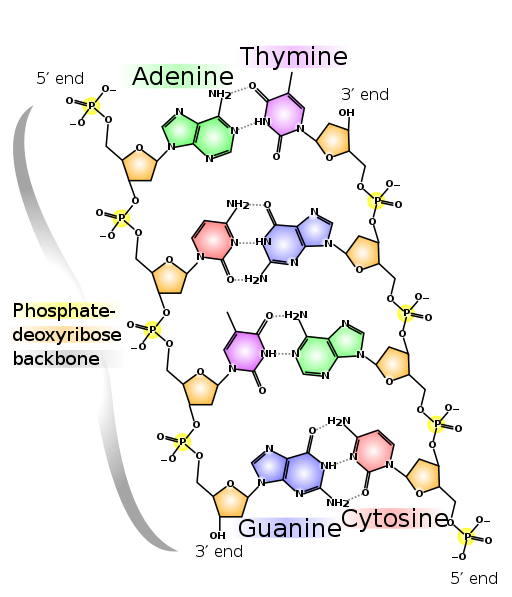Prokaryotic DNA vs Eukaryotic DNA
DNA is the genetic material in both Prokaryotes and Eukaryotes. The chemical composition and structural features of DNA in both prokaryotes and eukaryotes are similar. The major differences between prokaryotic and eukaryotic DNA were those related to its genetic content and organization. The present post describes the similarities and differences between the DNA of prokaryotes and eukaryotes with a comparison table.
Similarities between Prokaryotic and Eukaryotic DNA
Ø The DNA is double stranded and helical in both prokaryotes and eukaryotes.
Ø The DNA composed of purine (A and G) and pyrimidines (T and C) in both groups.
Ø Both groups follow the Chargaff’s rule.
Ø The strands are antiparallel in both groups.
Ø The three dimensional organizations of DNA such as helix pitch, number of base pairs per turn, distance between two bases, distance between two strands, formation of major groves and minor groves etc. are similar in both prokaryotes and eukaryotes.
Ø The replication of DNA is more or less similar in both groups.
Ø In both groups extra chromosomal genetic materials are present (plasmids in prokaryotes and mtDNA and cpDNA in eukaryoes).
| You may also like NOTES in... | ||
|---|---|---|
| BOTANY | BIOCHEMISTRY | MOL. BIOLOGY |
| ZOOLOGY | MICROBIOLOGY | BIOSTATISTICS |
| ECOLOGY | IMMUNOLOGY | BIOTECHNOLOGY |
| GENETICS | EMBRYOLOGY | PHYSIOLOGY |
| EVOLUTION | BIOPHYSICS | BIOINFORMATICS |
Difference between Prokaryotic and Eukaryotic DNA
Sl. No. Prokaryotic DNA Eukaryotic DNA 1 Occurs as covalently closed circular DNA (cccDNA). Occurs as linear DNA with two ends. 2 Freely occur in the central portion of the cytoplasm. Occur inside the nucleus (some in mitochondria and some in chloroplasts). 3 Do not form the typical chromosome. Form chromosome or chromatin in the nucleus. 4 Do not interact with histone proteins. Always associated with histone proteins. 5 No nucleosome formation. Form distinct structural repeats called nucleosomes. 6 The negative charge of the DNA is neutralized by divalent cations (Mg2+). The negative charge of the DNA is neutralized by the positively charged histone proteins. 7 The quantity of DNA is comparatively less. The quantity of DNA is more than prokaryotes. 8 Only very few proteins interacts with prokaryotic DNA. Large number of proteins interacts with eukaryotic DNA. 9 Usually codes for 300 to 500 proteins. Coders for about thousands of proteins. Human genome code for about 40000 proteins. 10 Majority of the DNA is coding, only very little non-coding region occurs in the prokaryotic DNA. Majority of DNA is non-coding. The size of coding region is less when compared to that of non-coding regions. 11 Introns absent in the coding region of DNA. Introns occur inside the coding region of DNA. 12 mRNA produce is polycistronic. mRNA is monocistronic.
| You may also like... | ||
|---|---|---|
| NOTES | QUESTION BANK | COMPETITIVE EXAMS. |
| PPTs | UNIVERSITY EXAMS | DIFFERENCE BETWEEN.. |
| MCQs | PLUS ONE BIOLOGY | NEWS & JOBS |
| MOCK TESTS | PLUS TWO BIOLOGY | PRACTICAL |

Chemical Structure of DNA (Image Source: CC Wikipedia)
